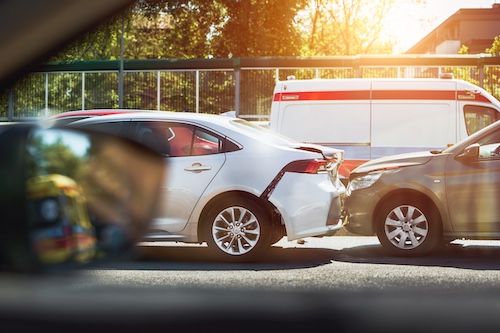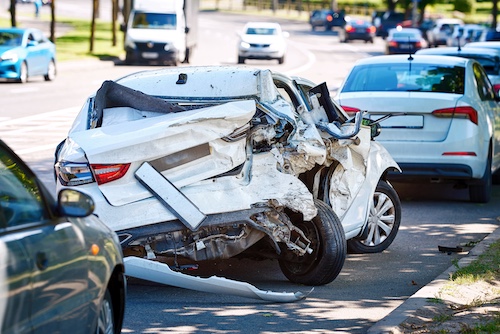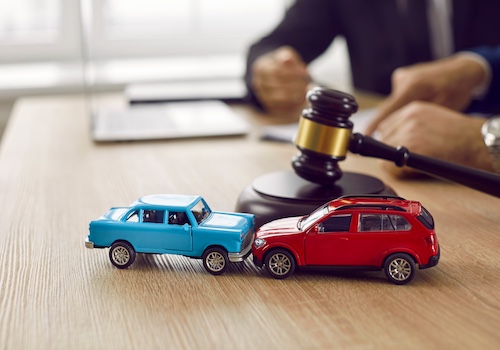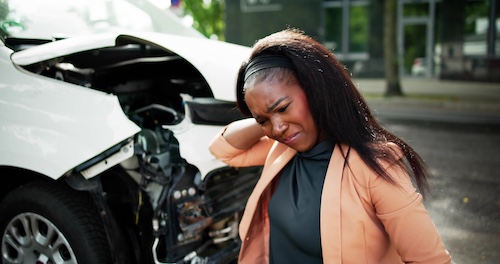Rear-End Collision: Understanding Fault and Its Impact
Rear-end collisions are among the most common types of car accidents, but determining who is at fault can be complex. Whether you’re the rear driver or the front vehicle, understanding the factors that contribute to these accidents and knowing your legal rights is crucial. In Colorado, the consequences of a rear-end car accident can range from severe injuries to significant property damage.
In this blog, we will discuss the common causes of rear-end collisions, how fault is determined in these accidents, and why working with an experienced Denver car accident attorney is crucial to ensuring you receive fair compensation for your injuries and damages.
Understanding Rear-End Collisions
A rear-end collision occurs when one vehicle strikes the back of another. This type of car accident is common and can happen for various reasons, ranging from distracted driving to poor weather conditions.
What is a Rear-End Collision?
A rear-end collision happens when the front of one vehicle crashes into the back of another vehicle. These accidents typically occur when a driver does not maintain a safe following distance or fails to react quickly enough to sudden stops. The rear driver is often held responsible for causing the accident, although certain factors, like brake failure or a sudden stop by the front vehicle, can shift fault.
Common Causes of Rear-End Collisions
Rear-end collisions can be caused by several factors. Distracted driving is a leading cause, such as when a driver uses a phone or becomes inattentive to the road. Driver fatigue also plays a role, as tired drivers may not respond quickly enough to a sudden stop. Poor weather conditions, like rain or fog, can reduce traction and visibility, increasing the risk of these types of accidents. Lastly, sudden stops by the front vehicle without warning can lead to rear-end crashes if the rear driver is unable to react in time.
Common Injuries in Rear-End Accidents
In rear-end car accidents, serious injuries are common. These include whiplash, which affects the neck and spine, as well as internal injuries, spinal cord injuries, and head trauma. The sudden impact of a rear-end crash can force the body forward and backward rapidly, causing strain on muscles and ligaments. Injuries can be immediate or delayed, so it is crucial for accident victims to seek medical attention promptly.
The Importance of Safe Following Distance
One of the most important factors in preventing rear-end collisions is maintaining a safe following distance. Drivers should keep enough space between their vehicle and the one in front to avoid a crash in case the front vehicle suddenly stops. The rule of thumb is the “three-second rule,” which gives enough time for a driver to react if the vehicle ahead brakes suddenly.
Determining Fault in a Rear-End Collision
Determining fault in a rear-end collision is essential for insurance claims and legal matters. The rear driver is usually at fault, but there are circumstances that can change this assumption.
Colorado Law on Rear-End Collisions
Under Colorado law, the rear driver is typically held responsible for a rear-end collision. This is outlined in Colorado Revised Statutes 42-4-1008, which requires drivers to maintain a safe distance and be prepared to stop. However, the front driver may be at fault if they make an unsafe or sudden stop without signaling, or if their vehicle is not in proper working condition, such as with brake failure.
The Role of Evidence in Proving Fault
Proving fault in a rear-end accident relies on evidence collected from the scene. A police report can be crucial in determining fault, especially when it includes statements from witnesses or an officer’s observations. Video footage, skid marks, and the damage to the vehicles involved can also provide valuable insight into how the accident occurred.
Exceptions to the General Rule
While the rear driver is typically held responsible, exceptions exist. If the front vehicle’s brake lights were not functioning, or if the front driver made an abrupt or sudden stop without warning, the fault may shift to the front driver. Additionally, weather conditions and road conditions like ice or rain can reduce traction, complicating the determination of fault in a rear-end crash.
Insurance Companies and Determining Fault
Insurance companies play a key role in determining fault after a rear-end collision. They investigate the accident by reviewing the police report, interviewing witnesses, and examining the vehicles involved. Insurance adjusters consider factors like the severity of vehicle damage, the distance between the two vehicles, and the actions of both drivers leading up to the accident. If fault is disputed, legal representation may be necessary to ensure fair compensation for damages and injuries.
Common Causes of Rear-End Collisions
Rear-end collisions can occur for various reasons. Understanding these causes can help prevent accidents and improve road safety.
Distracted Driving
Distracted driving is a leading cause of rear-end accidents. Drivers who engage in activities such as texting, talking on the phone, or adjusting their steering wheel controls are less likely to notice sudden stops or changes in traffic. This lack of attention increases the risk of a rear-end car accident, as the driver may not react quickly enough to avoid a collision.
Driver Fatigue
Driver fatigue is another common cause of rear-end crashes. Tired drivers have slower reaction times, making it difficult to respond to unexpected events, such as sudden stops or heavy traffic. Drowsy driving is as dangerous as distracted driving and can result in serious accidents, especially in long-distance travel or when driving late at night.
Poor Weather Conditions
Poor weather conditions significantly impact the likelihood of rear-end collisions. Rain, snow, ice, or fog can reduce visibility and decrease traction, making it harder for drivers to stop safely. When road conditions are hazardous, maintaining a safe following distance becomes even more important to avoid accidents.
Sudden Stops by the Front Vehicle
One of the most common causes of rear-end accidents occurs when the front driver suddenly stops without warning. This can happen due to unexpected obstacles, sudden changes in traffic flow, or the front driver’s failure to use brake lights effectively. In these situations, the rear driver may not have enough time to stop, leading to a collision.
Inadequate Following Distance
Not maintaining a proper following distance is a major cause of rear-end crashes. When a driver follows too closely behind another vehicle, they have less time to react if the front driver suddenly slows down or stops. Drivers should always leave enough space between their vehicle and the one ahead to account for sudden changes in traffic speed.
The Importance of Legal Representation
After a rear-end collision, legal representation can make a significant difference in the outcome of your case. A car accident lawyer can help ensure you receive the compensation you deserve for damages, injuries, and other losses.
Why You Need a Car Accident Lawyer
Dealing with a rear-end collision can be overwhelming, especially if you have suffered serious injuries or significant property damage. Our experienced car accident lawyers at Colorado Car Accident Lawyers are dedicated to helping clients navigate the complexities of their cases. We can help you understand your rights, guide you through the legal process, and ensure that you are compensated fairly for medical bills, lost wages, and pain and suffering.
Handling Insurance Claims and Negotiations
Insurance companies may not always offer fair settlements, even when you are not at fault. Our attorneys have extensive experience negotiating with insurance adjusters to ensure that your claim is handled properly. We understand how to gather evidence, present your case, and advocate for your best interests, whether through direct negotiations or litigation if needed.
Maximizing Compensation for Injuries and Damages
If you have been injured in a rear-end crash, your medical bills, lost wages, and other costs can quickly add up. Our team works to maximize your compensation by considering both immediate and long-term costs. We fight for the full range of damages you may be entitled to, including compensation for physical therapy, emotional distress, and any permanent injuries you may have sustained.
Protecting Your Rights
In some cases, determining fault in a rear-end collision can be complex. If there is any dispute over liability or if you are facing unfair treatment from an insurance company, our lawyers will protect your rights. We work diligently to ensure that the evidence is in your favor, and we are committed to holding negligent parties accountable. Whether you need help with filing a lawsuit or simply understanding your options, our team is here to guide you every step of the way.
Contact an Experienced Denver Car Accident Lawyer Today!
If you’ve been involved in a rear-end collision and are facing medical bills, lost wages, or property damage, our team at Colorado Car Accident Lawyers is here to help. We understand the stress and challenges that come with such accidents, and our experienced Denver car accident attorneys are committed to ensuring you receive the compensation you deserve.
Contact us at 864-313-2487 for a free case review today!







